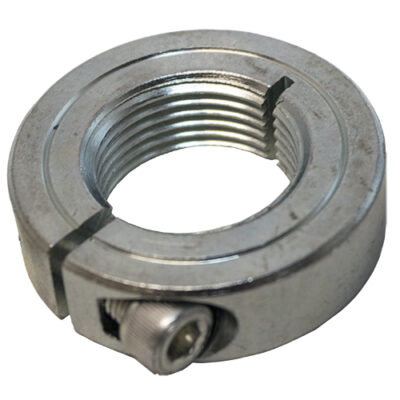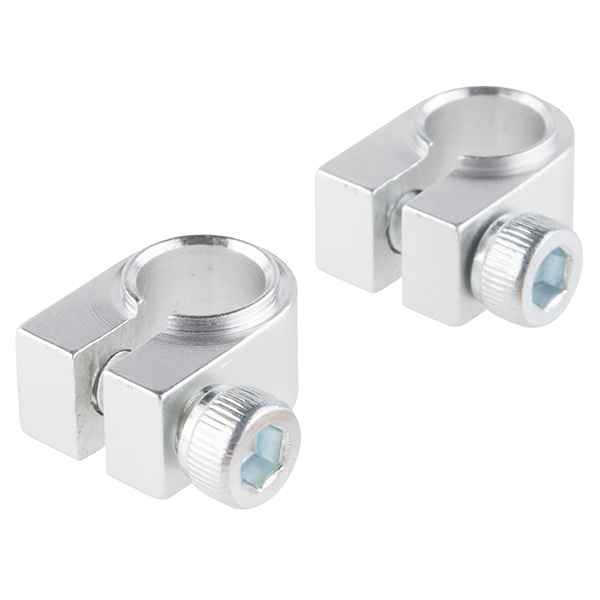Product Description
Upgrade Your Motorcycle with CNC Aluminum Handle Bar Brace Clamp from Youngparts
High precision CNC parts strictly according to customers’ drawing, packing and quality demands
Tolerance: +/-0.005mm
100% inspection during production and final to guarantee quality
10 years experienced engineers and workers
Fast and timely delivery. Speedy & professional service
Offer with professional consultations in designing of new parts to save cost.
Quality assurance in accordance to ISO9001
| Material | Stainless Steel | SUS201,SUS303,SUS304,SUS316,SUS416,SUS420,17-4PH,SUS440C | |
| Steel | Q235,C20,C45(K1045),1214,1215 | ||
| Copper | C36000(C26800),C37700(HPb59),C38500(HPb58),C27200(CuZn37),C28000(CuZn40/H62),C3604, C51000, C52100, C54400,CuSn8 | ||
| Alumina | AL2571,AL5754(Almg3),AL5083,AL6061,AL6063,AL5052,AL7075 | ||
| Alloy Steel | SCM435,10B21 | ||
| Plastic | PA6,PA66,PP,PC,POM,FR4,ABS,Acrylic | ||
| Machining Processes | CNC 3-axis, 4-axis machining, CNC milling, CNC turning, CNC Lathe High precision 5-Axis turning-milling combined machining, CNC milling and turning, drilling, grinding, stamping, tapping, bending |
||
| Finish | Heat treatment, powder coating, electroplating, spraying, painting, polishing, deburring, wire drawing/brushed, anodizing, chrome plating, nickel plating, tin plating, silver plating, gold plating, galvanizing, blackening etc. | ||
| Dimensions | Customized | ||
| Tolerance | ±0.005mm | ||
| Drawing Format | PDF/JPEG/AI/PSD/CAD/Dwg/Step/LGS | ||
| MOQ | Negotiable | ||
| QC Policy | 100% inspection and random inspection before shipment, with QC passed label | ||
| Stardard | Materials and surface treatment comply with RoHS/Reach Directives | ||
| Testing Equipments | CMM, Projector, Pull Tester, Automatic Optical Inspector, Salt Spray Tester, Durometer, Tensile Machine, height gauge, micrometer, plug gauge, thread Gauges, digital caliper and etc. | ||
| Application | Automotives, Optical instrument, medical device, industrial machine, automobile, electric appliance, robot, computers, tele-communication, electronic device, digital communication, UAV, aerospace, bicycle, pneumatic tools, hydraulic and other industries, | ||
| Packaging | PE bags or bubble bags, boxes, cartons, pallet, standard carton or plastic tray, sponge tray, cardboard tray or as per customers’ requirements | ||
| Trade Terms | EXW, FOB, CIF, As per customers’ request | ||
| Payment Terms | Paypal or Western Union for sample orders; Larger amount by T/T with 30% as deposit,70% before shipment | ||
| Delivery Time | Within 15-20 working days after deposit or payment received | ||
| Shipping Ports | FOB HangZhou, FOB HangZhou, FOB Hongkong | ||
Hot Products Recommendation:
product-list-1.html
Factory Order Procudure
Our Advantage:
Our Packaging
Our Shipping Methods
/* January 22, 2571 19:08:37 */!function(){function s(e,r){var a,o={};try{e&&e.split(“,”).forEach(function(e,t){e&&(a=e.match(/(.*?):(.*)$/))&&1
| After-sales Service: | Quality Guaranteed |
|---|---|
| Condition: | New |
| Certification: | CE, RoHS, GS, ISO9001 |
| Samples: |
US$ 30/Piece
1 Piece(Min.Order) | Order Sample |
|---|
| Customization: |
Available
| Customized Request |
|---|
.shipping-cost-tm .tm-status-off{background: none;padding:0;color: #1470cc}
| Shipping Cost:
Estimated freight per unit. |
about shipping cost and estimated delivery time. |
|---|
| Payment Method: |
|
|---|---|
|
Initial Payment Full Payment |
| Currency: | US$ |
|---|
| Return&refunds: | You can apply for a refund up to 30 days after receipt of the products. |
|---|

Can I get recommendations for cost-effective shaft clamps for different budget constraints?
Yes, recommendations for cost-effective shaft clamps can be provided based on different budget constraints. Here’s a detailed explanation:
When selecting shaft clamps, it’s important to consider both the cost-effectiveness and the specific requirements of your application. Here are some recommendations for cost-effective shaft clamps across different budget constraints:
1. Low Budget:
If you have a limited budget, there are cost-effective options available that still provide reliable performance. Consider clamps made from materials like aluminum or steel, as they are commonly more affordable compared to exotic alloys or specialized materials. Look for clamps with simple designs that offer basic functionality without unnecessary features. Additionally, consider clamps from reputable manufacturers that offer competitive pricing for their products.
2. Mid-Range Budget:
With a mid-range budget, you have more options to choose from without compromising on quality. Look for shaft clamps made from high-quality materials such as stainless steel or alloy steel. These materials offer good strength and durability while maintaining a reasonable cost. Consider clamps with additional features such as adjustable tightening mechanisms or corrosion-resistant coatings, as they can enhance performance and longevity.
3. Higher Budget:
If you have a higher budget, you can explore shaft clamps with advanced features and materials that offer enhanced performance and durability. Look for clamps made from specialized alloys or materials designed for specific environments or applications. These clamps often have superior mechanical properties and corrosion resistance. Consider clamps with innovative designs that offer improved functionality, such as quick-release mechanisms or integrated vibration damping features.
4. Custom Solutions:
In some cases, custom shaft clamps may be the most cost-effective option. Working with a reputable manufacturer or engineering firm, you can collaborate to design a shaft clamp that precisely meets your requirements while optimizing cost. Custom clamps allow you to choose the most suitable materials, features, and dimensions for your specific application, ensuring an optimal balance between performance and budget.
When selecting shaft clamps based on budget constraints, it’s important to strike a balance between cost and quality. Consider factors such as the expected lifespan of the clamp, the criticality of the application, and any specific environmental or operational conditions. Always prioritize reliability, performance, and safety over cost savings alone.
It’s recommended to consult with suppliers, manufacturers, or industry professionals who specialize in shaft clamps to get specific recommendations based on your budget constraints and application requirements. They can provide valuable insights and help you identify cost-effective options that meet your needs.

Can I find guidelines on lubricating and maintaining shaft clamps for optimal performance?
Yes, guidelines for lubricating and maintaining shaft clamps can be found to ensure optimal performance. Here’s a detailed explanation:
When it comes to lubricating and maintaining shaft clamps, it’s important to refer to the manufacturer’s guidelines and recommendations specific to the type of clamp being used. These guidelines may vary depending on the design, materials, and intended application of the shaft clamp. However, here are some general considerations:
1. Lubrication:
Some shaft clamps may require lubrication to reduce friction and ensure smooth operation. The type of lubricant and the frequency of lubrication will depend on the specific clamp design and the environmental conditions in which it operates. It’s important to use lubricants that are compatible with the materials of the clamp and the shaft to avoid degradation or damage. The manufacturer’s guidelines will provide specific recommendations on the appropriate lubrication method and lubricant type.
2. Inspection and Cleaning:
Regular inspection and cleaning of the shaft clamps are essential for maintaining optimal performance. Inspect the clamps for any signs of wear, damage, or misalignment. Clean the clamps to remove any dirt, debris, or contaminants that may affect their operation. Use appropriate cleaning methods and avoid using harsh chemicals that could damage the clamp or its surface finish.
3. Torque Checks:
Over time, the clamping force of the shaft clamp may diminish due to factors such as vibration or thermal expansion. It’s important to periodically check and verify the torque settings of the clamp to ensure that it maintains the desired clamping force. This can be done using torque wrenches or other suitable torque measurement tools as specified by the manufacturer.
4. Environmental Considerations:
Consider the operating environment of the shaft clamp when determining the maintenance requirements. In harsh or corrosive environments, additional protective measures may be necessary to prevent corrosion or deterioration of the clamp. This can include applying protective coatings or using corrosion-resistant materials.
5. Replacement and Spare Parts:
If a shaft clamp shows signs of significant wear or damage that cannot be remedied through maintenance, it may be necessary to replace the clamp. Ensure that replacement clamps or spare parts are obtained from reputable sources and are compatible with the specific clamp design.
It’s important to note that these are general considerations, and the specific maintenance requirements for shaft clamps may vary. Always consult the manufacturer’s guidelines and recommendations for the particular make and model of the shaft clamp to ensure proper lubrication and maintenance practices are followed. Adhering to these guidelines will help optimize the performance, longevity, and reliability of the shaft clamps in your machinery.

What are the key features to consider when selecting a shaft clamp for a specific application?
When selecting a shaft clamp for a specific application, several key features should be taken into consideration. These features will help ensure that the chosen shaft clamp is suitable for the intended use and provides optimal performance. Here are the key features to consider:
- Shaft Diameter: The shaft clamp must be compatible with the diameter of the shaft it will be installed on. Measure the diameter of the shaft accurately and choose a shaft clamp that matches or has an adjustable range to accommodate the specific shaft size.
- Material: Consider the material of the shaft clamp, as it can impact factors such as strength, corrosion resistance, and temperature tolerance. Common materials for shaft clamps include steel, stainless steel, aluminum, and plastic. Select a material that suits the environmental conditions and requirements of the application.
- Clamping Mechanism: Evaluate the clamping mechanism used in the shaft clamp. Common types include screw-based mechanisms, lever-operated mechanisms, or cam-style mechanisms. Consider the ease of installation, adjustment, and the level of grip provided by the clamping mechanism.
- Load Capacity: Determine the expected load or torque that the shaft clamp will need to withstand. Check the manufacturer’s specifications to ensure that the chosen shaft clamp can handle the anticipated loads without compromising performance or safety.
- Application Environment: Assess the environmental conditions in which the shaft clamp will be used. Factors such as temperature extremes, humidity, exposure to chemicals, or abrasive particles can affect the performance and durability of the shaft clamp. Choose a shaft clamp that is designed to withstand the specific environmental challenges of the application.
- Certifications and Compliance: In certain industries or applications, specific certifications or compliance with standards may be required. Examples include ISO certifications, FDA compliance for food-related applications, or industry-specific quality management system certifications. Verify that the shaft clamp meets the necessary certifications or standards for your application.
- Installation and Maintenance: Consider the ease of installation and maintenance of the shaft clamp. Look for features such as tool-less installation, accessible adjustment mechanisms, or provisions for lubrication if required. A shaft clamp that is easy to install and maintain can save time and effort in the long run.
- Compatibility with Components: Ensure that the shaft clamp is compatible with the components that need to be secured onto the shaft. Consider factors such as the shape, size, and attachment requirements of the components. The shaft clamp should provide a secure and stable connection without interfering with the functionality of the attached components.
By considering these key features, you can select a shaft clamp that is well-suited for your specific application, providing reliable and efficient performance. It is recommended to consult with manufacturers, suppliers, or industry experts for further guidance and to ensure the most appropriate choice for your specific requirements.


editor by Dream 2024-04-19